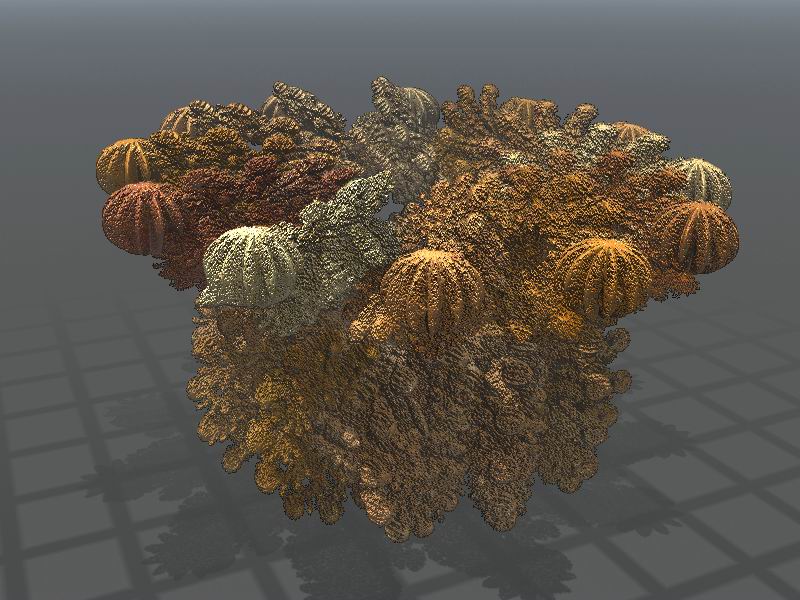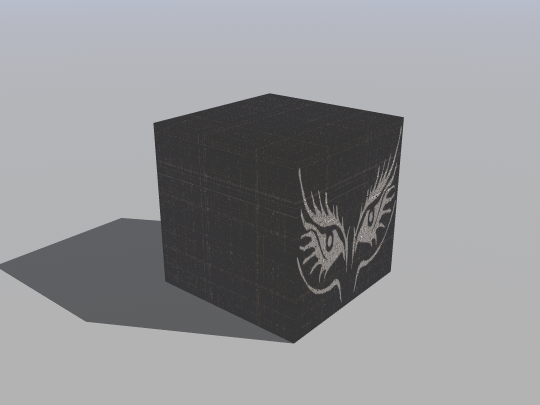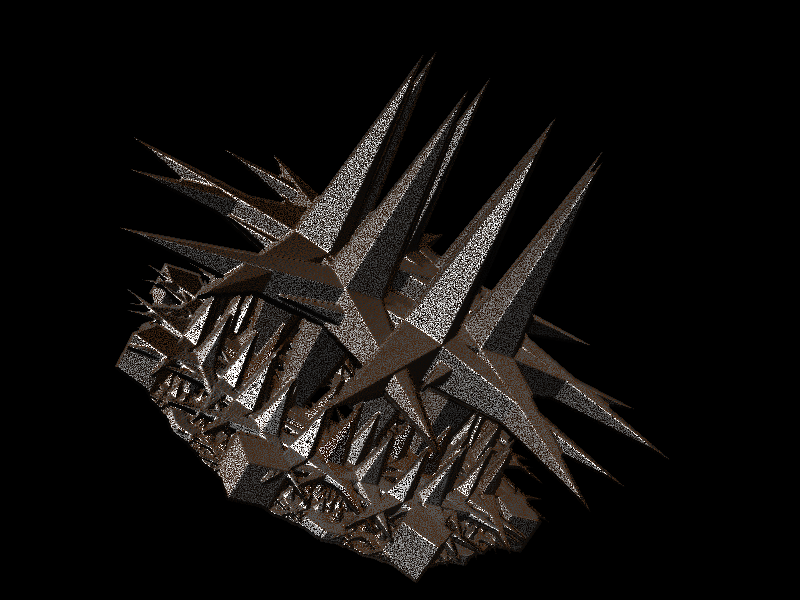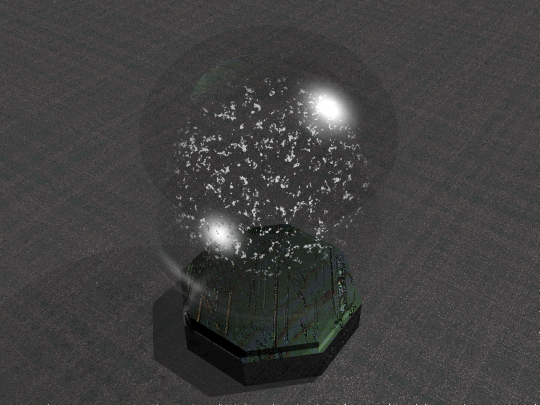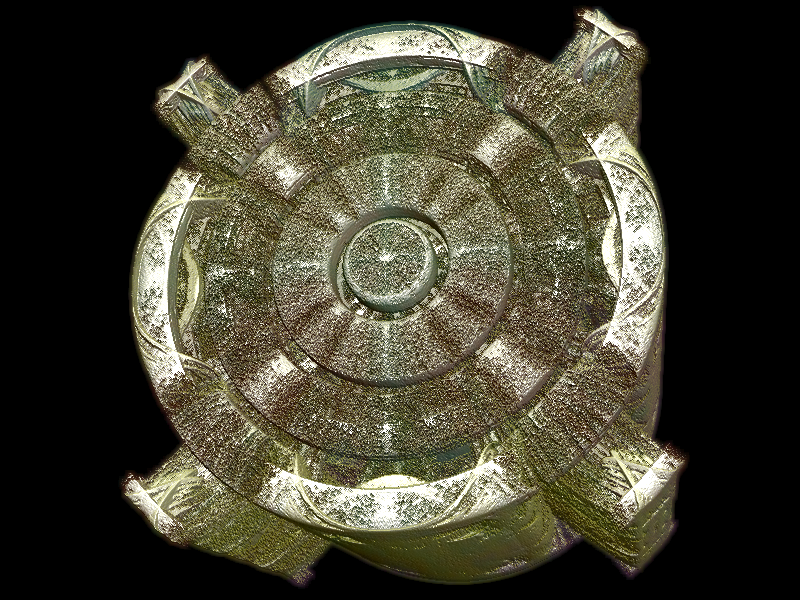
Godlike powers can be mass-produced and inexpensive
- Carl Feynman
Tech Levels
(based on the GURPS system below TL 8)
General Technology
0 Stone age
1 Bronze age
2 Iron age
3 Medieval
4 Renaissance: gunpowder, printing
5 Industrial: mass production, steam power, telegraph
6 Atomic: Flight, radio, electricity grid, rockets
7 Information: Computers, laser
8 Biotech: Genetic modifications, smart materials, bionic implants
9 Nanotech: Molecular machinery, assemblers, AI
10 Quantum tech: Quantum computing, nuclear transmutation
11 Femtotech: Exotic matter, antimatter, computronium
12 Clarketech: Gravity manipulation, space-time engineering
Placeholder Device (TL 12)
Clarketech device able to increase its mass, used to hold objects in orbit around itself. The device is a spherical pebble, controlled through the usual transcendent interfaces. It can be commanded to change its gravity, enabling it to act as an anchor.
It can also be used as a weapon in planetary environments: at its normal setting, the gravity is large enough to compress a few cubic kilometers of stuff into degenerate matter, and at higher settings it can in principle create a black hole.
Power Production
0 Human muscle power
1 Domestic animals such as horses; water wheel
2 Windmill
3 Horse with horse-collar
4 Fossil fuels
5 Steam engine, electricity
6 Hydroelectric power, nuclear power
7 Solar power, OTEC
8 Beamed solar power from space, fuel cells
9 Fusion, nanostorage, room temperature superconductors
10 Fusion batteries, neutrino cooling
11 Antimatter energy storage, Dyson shells
12 Matter-energy conversion
Nanobatteries (TL 9)
Energy is stored in strained molecular bonds in designer materials.
Fusion batteries (TL 10)
Batteries contain microscale fusion units.
Neutrino Cooling (TL 10)
Device converting heat into neutrinos; an efficient way of cooling even in extremely hot environments. Neutrino cooling is the main method of cooling in Ex Tempore. Since the space is fairly small enormous neutrino pumps clear it from neutrinos which are dumped into the Big Crunch.
Military
"...thanks to the rapid assistance of Aquincorian Nano-Defense. The algae, that proliferated around the main fastenings of the Arx, would have posed a serious threat against habitat stability, had not the pretorian Nanodef encapsulated it in liquid sealing plastic..."
- Independent News Sodality, feed VIII
0 Fists and stone weapons
1 Spears and arrows, bronze swords, leather armor
2 Iron swords, shields, scale armor
3 Steel weapons; lance, flail, crossbow; plate and chainmail, castles
4 Black-powder musket; cannon
5 Ironclad warship, dynamite, repeating guns
6 Battleship, tank, machine-gun, fighter aircraft, fission bomb, flak jacket
7 Nuclear missile, atomic submarine, jet fighter, Kevlar, spy satellite
8 Cybertank, advanced bioweapons, drone weapons, infowar
9 Diamond armor, smart weapons, replicator weapons, khaki goo
10 Quantum detectors, superintelligent weapons, relativistic projectiles
11 Strangelet bombs, femtotech infiltrators
12 Singularity weapons
Khaki goo (TL 9)
General term for military nanodevices and nanoimmune systems. Red and black goo are attack nanodevices infiltrating enemy installations, soldiers or objects to perform sabotage, information gathering or attack. Blue goo is defensive systems to stop them. Goo can range from bacteria-like infestations to active swarms or liquids of nanosystems.
Replicator weapons (TL 9)
Weapons that can reproduce. Often designed with a hive architecture: worker devices gather resources at a central factory producing more workers, power sources, factories and weapons. This can either be a nanoscale system eating its surroundings and converting them into armaments, or a macroscale robotic system. Some versions involve artificial evolution to create variants of the weapons, possibly evolving into wildly unexpected forms. Usually a built in recall code enables the owner of the weapon system to prevent them from attacking friendly installations or to go into “obedience mode”, although accidents have a nasty tendency to happen with this kind of system.
Quantum detectors (TL 10)
Active and passive systems exploiting spin resonance, neutrino field radar or other subtle means to detect what is going on within a region. They can see through most forms of matter, detect quantum manipulations and incidentally tend to disrupt unshielded quantum computing. Used as an ultratech anti-bugging system, for passive scanning or quickly building maps of local space.
Relativistic projectiles (TL 10)
Tactic or strategic weapons accelerating heavy projectiles to near light speed, impacting their target so fast that early detection and interception is nearly impossible. This is used in interstellar and interplanetary warfare, especially against enemies with efficient countermeasures as beam weapons or relativistic interceptors which can stop most incoming missiles if they can be detected.
Strangelet Bombs (TL 11)
Devices releasing droplets of strange matter, a stable mixture of quarks that converts normal matter into strange matter. Strange matter is super-dense and the conversion process tends to release significant amounts of energy, which usually breaks the droplets apart. While strangelets can be used against small targets like spaceships and orbital habitats this is merely as destructive as a heavy ion cannon – the real power lies in their ability to chew up planetoids, planets and stars. An infected planet will be infested with strangelets constantly absorbing matter and breaking apart, which will quickly (in a matter of hours or days) convert the planet. The end result is a hot ultra-dense core and an expanding shell of exploded debris and strangelets.
Medicine
0 None
1 Supportive treatments, herbs
2 Bleeding, chemical remedies
3 Amputations, simple prosthetics
4 Anatomy
5 Germ theory of diseases, anesthetics, vaccines, heredity
6 Major surgery, antibiotics
7 Organ transplants, plastic surgery, designer drugs, genetic testing
8 Cloning, bionics, hunter-seeker cells, personalized medicines, germline genetic therapy
9 Longevity, cryonic revival, automedics, nanoimmunity, cellular repair, euthenics
10 Uploading, total cellular repair, mind reconfiguration, chrysalis machine
11 Total morphological freedom, mental engineering
12 Consciousness design
Mindstates (TL 10)
Scanning brains for continued existence as an infomorph, backup copies or other purposes is a mainstay of TL 10 medicine and often lifestyle. Simple brain scanning using nanomachinery to slice and scan the brain is rare in Namaqua; there exist safer and more efficient methods leased from technologically advanced cultures. The most common method is helicality scanners, using neutrinos to produce a detailed brain scan.
New arrivals to Ex soon discover the thriving mindstate trade. Minds from the timestream represents concentrations of new information, experiences and skills not found in Ex, making them valuable and interesting. Many groups are willing to pay well for mindstates. They are usually not run as conscious entities except possibly for conversation purposes; although some cultures when developing uploading use uploads as cheap intellectual labour, in most cases AI do the job far better and more cheaply. Instead the mindstates are studied, have their memories refined into virtualities or experiences, particular skills woven into AI etc. Still, many fear that by selling mindstates they are selling copies of themselves into slavery.
The major players on the mindstate market are Ashizuri, the Tauiatta and the post-Aquincorian utopians living in Arx Tarautuas. These are known as trustworthy mindstate dealers and often give a good price for a mind from a transient timeline. One special deal is the triple fork: the scan pays for a copy of the person downloaded into a suitable bioshell, while another copy acts as an indentured consultant for the buyer for five years (many Aquincorians have problems with this hint of slavery). Several other mindstate dealers exist within the virtualities, ranging from the honorable Desire-5 clan (a N’Modugno offshoot) to downright shady posthumans like Bia Map.
Industry
"..the multitudinous aspect of the stick is not to be mistaken for originality. Several researchers made this mistake, only to be humiliated weeks after their publishing by pattern-infringment claims from a nodus antipodus advertising entity..."
-Aquincorum Trade review
0 Crafts
1 Crafts
2 Crafts
3 Crafts
4 Manufactures
5 Mass production
6 Assembly-line
7 Simple robotics
8 Biotech plantations, mass customization, industrial ecologies
9 Nanoassembly, von Neumann devices
10 Matter compilers, Santa Machines
11 Matter foundries
12 Cosmological engineering
Matter Compilers (TL 10)
Devices that take a design of an object and builds it using nanotechnology. Simple forms developed during TL 9 make larger objects from smaller parts assembled in a convergent way.
Santa machines (TL 10)
Matter compilers with a built in AI able to design and construct nearly anything asked for.
Matter foundries (TL 11)
Devices able to create matter on order from energy, usually supplied by converting unwanted matter into energy. Although horrendously energy-wasting (a sizeable fraction of the mass equivalent energy is dissipated as heat) it is a practical way of creating designer matter in huge quantities.
Environmental Technology
"...the substrate of the exo-skeleton proved quite superfluous during the second era. Later developments in Nagatic design has, however, brought about something of a renaisance regarding the corporeal aspect of the fruitfliers..."
- Encyclopaedia stocastica
0 Hunting and gathering skills
1 Agriculture, domestication
2 Selective breeding
3 Geography
4 Natural science
5 Evolution theory, geoscience
6 Hybrid species, complete world maps
7 Ecology, genetic engineering, environmental monitoring
8 Ecological engineering, designer species
9 Climate management, ecosystem design
10 Terraforming, artificial life
11 Star lifting, designer evolution
12 Stellification
Star Lifting (TL 11)
Technologies for managing stars, including mixing their atmospheres, lifting off matter for industry or to make them burn longer, and activating or inhibiting nova processes.
Stellification (TL 12)
The conversion of planets (usually giant planets) into artificial suns by slowly converting their mass into energy. This is rarely used by civilizations with access to phasing (since they can easily find new stars elsewhere).
Information
"...What began as a trawl through the accounting records of a mid-sized Aquincorian litigation agency took a radically different turn when I met the dolphin. Tossing and turning in the immaculate data-flows, it toyed with my security measures. Leaving a residual spark in my HUD:s, it whiskered off, probably in search of more informational climes..."
-Account of Manuel De Orinha, Communications specialist, Magellanica.
0 Oral tradition
1 Writing, mathematics
2 Mnemonics
3 Courier networks
4 Printing, calculation tools, semaphores
5 Telegraphy, telephony, mechanical calculators
6 Radio, television, global communications, electromechanical calculators
7 Computers, information networks, strong crypto
8 Semantic networks, quantum crypto, software agents
9 AI, atomic level storage, sentient networks
10 Quantum computers, superintelligent software
11 Femtoscale storage, Jupiter brains
12 Black hole computers, Omega Points
Virtuality Bath (TL 9)
A liquid bath of nanomachines, connecting anyone immersed with the virtualities. Most virtuality baths appear like ornate tubs of opalescent liquid, usually found in virtuality bathhouses or cogitowns. The liquid supplies nutrients and removes waste, keeps the mind connected to the net and provides convincing force feedback if needed. Many humans suffer from virtuality addiction and spend all their time in virtuality baths.
Translation Devices (TL 8)
Given the bewildering variety of species, cultures and histories in Ex, communication is a problem. Most groups need translation, and a similarly broad variety of translation devices exist. The simplest devices are little more than dictionaries with speech recognition, usually producing a very poor translation (if any at all), but hopefully providing some clues on what was being said. More advanced software can handle more complex translation, but it is not until near-human AI is reached that the translation devices become as flexible as real translators.
Shoukakegawa constructs neurocomputer translators, which have the nice property of learning by experience simply by listening to languages. These devices contain cultured neural tissue, and can be interfaced by typing, voice or neural interface. Although an original human invention, they are very similar to the Trilo translators (which look like heavy coral growths). Both groups have profitably begun to copy each other’s circuitry. Republica Aquincorum and Lamplandae employ software translators of varying quality. Most humans would love to own Strigae units, since they are far more powerful and versatile than most human translators.
Mind Boxes (TL 9)
Small cubical objects, apparently made of black diamond with regular markings on the sides. These boxes contain solid state Ais, mindstates or just dense information storage.
Black Hole Computers (TL 12)
Computers working at the ultimate limits of information processing. The components are quantum black holes forming and evaporating at an extreme rate, enabling 10^50 operations per second and 10^31 bits of storage for a one kilogram computer.
Omega Points (TL 12)
When a closed universe collapses, the shear energy of space-time can be extracted and used to power computation. By constructing an universe-spanning computing infrastructure that does information processing in the increasingly hot plasma more and more computations can be done per second. As the universe shrinks and grows hotter the system accelerates, making the subjective time for infomorphs inside the computing matrix seem to stretch. The end result is that the amount of information stored and processed goes to infinity in a finite time. At the last moment the entire universe is a single point of total information.
Implementing an omega point requires massive universe re-engineering, and civilizations with access to phasing often exploit it to deal with the somewhat unpredictable shifts near the final singularity. Hence they create whole families of omega points, which sometimes results in exceedingly dense bursts.
Transport
0 Feet, canoes, sledges, skis
1 Horseback, carts, sailing rafts and small galleys
2 Horseback with saddle, ocean going galleys
3 Horseback with saddle and stirrups, sailing ships
4 Fully rigged ships, hot air balloons
5 Zeppelin, steamship, railroad
6 Automobile, aircraft, ocean liner, submarine
7 Jet aircraft, space shuttle, maglev monorail, hovercraft
8 Nuclear spacecraft, scramjet, biocar, swimships
9 Orbital tower, aircars, lightships
10 Interstellar craft
11 Relativistic interstellar crafts
12 Wormholes, antigravity propulsion
Wormhole Projector (TL 12)
A device used by some of the Advanceds for quick transportation within Ex and elsewhere. Using titanic energies they can expand a Planckscale wormhole to macroscopic size, bringing a sizeable chunk of matter through to the desired destination. This is the method used to haul new arrivals into the Bays if they do not seem spaceworthy (a surprisingly common occurrence). The Advanceds also use hard-to-detect microscopic wormholes to send pico- and nanomachines to wherever they are needed, a very efficient means of spying and infiltrating less advanced civilizations. Wormhole projectors are also the key component of most clarketech weapons, both doing scanning, attacks and defense.
Material Science
0 Stone, wood, fur, bone
1 Bronze, tin, glass, bricks, gold
2 Iron, mortar
3 Steel
4 Chemistry
5 Alloys, chemical synthesis
6 Plastic, organic synthesis, catalysts
7 Composites, semiconductors, memory metals
8 Biomaterials, micromechanical systems, artificial enzymes
9 Programmable matter, nanomechanical systems, diamondoid
10 Utility fog, quantum systems, reconfigurable objects
11 Neutronium, quark matter computronium
12 Exotic matter, gluonic string, black hole atoms
Gluonic String (TL 12)
Stable strings of gluons, held together by the strong force. Gluonic strings require constant spin control in order not to decay into mesons. Although the theoretical upper strength limit corresponds to a tension equal to the mass-energy of the string itself (at which point it spontaneously converts to exotic matter), in practice only modes up to the proton mass can be prevented, producing a spring constant and maximal tension of 2*1010 N/m for each string. This is enough for most megaengineering designs.
Economy
"...The paths of the righteous shall proceed unimpeeded. When the heresy has finally been stamped... BUY NUTRIPASTE! ITS HEALTHY!... upon the return of the sacred covenant, the seed will be sown... ARE YOU DEPRESSED! BUY NON-DOWN!... ... for the ultimate benefit of all..."
- UJKH Harmonic dissemination 5, hacked by rouge Shoukakegawan advertising
0 Barter
1 Currency
2 Trade
3 Mercantilism
4 Banking, shares, insurance
5 Corporations, capitalism, Keynesianism
6 Global economy
7 Information economy (services, rather than physical goods become major products)
8 Knowledge economy (organized information as the most valuable goods)
9 Postmaterial economics (material goods are nearly trivial to produce and become very cheap)
10 Postscarcity economics (both material and immaterial goods are trivial to produce; the economy has to deal with total abundance)
11 Conceptual economy (new ideas and concepts are the most valuable commodities)
12 Posteconomy (there is no scarcities of anything; the challenge is to find a reason to interact with anybody else)
Makara (TL 8)
Currency issued by the Shoukakegawa, based on biotechnology. Each coin is a living being, contained inside a protective clear shell and subsisting on sunlight. Their limited timespan acts as a negative interest rate: money has to be spent, or it will eventually die.
Time Travel Technology
The basic method of parachronic travel is phasing – to leave the timestream, traverse the void outside time and enter Ex Tempore or the timestream again. This is achieved by surrounding the traveler and his vehicle with a phasing field and then change its polarization. The phasing field “drags” everything with it outside the timestream, leaving nothing behind. A fast polarization change produces a sudden vacuum; a slower polarization lets the traveler just fade away.
It is important to have a strong phasing field, otherwise some atoms and molecules will be left behind. Also, edge effects can be troublesome; at the outskirts of the field only a few atoms are transmitted, increasing towards its interior. Most advanced time travelers try to have a sharp field edge, but it is not always easy to sustain it in adverse conditions. Phasing machinery often tends to leave metal objects and rocks underneath subtly weakened when they leave, and after a number of trips they often themselves start to wear at the edges.
When re-appearing, the phasing field tends to repel everything that was in the way. A fast polarization produces a nearly explosive re-appearance, sending everything that was in the space taken up by the arriving device away in a shock-wave; it is not uncommon for such fast polarizers to use space or high altitude atmosphere locations to avoid both causing undue attention, damaging the surroundings or themselves. A slower polarization more gently pushes away objects, and can be used within planetary environments (phasing into solid rock is still not a good idea).
A much feared event is field inhomogenization. If a field is disrupted as it is repolarized, parts of the time ship and traveler will not leave, leading to a very sticky situation. This can occur if two phasing fields overlap in the wrong way, malfunctioning generators or sometimes due to intense electrical activity nearby.
It is possible to launch objects with external phasing generators, which means that they have no way of traveling anywhere themselves once they arrive. This can be used to phase them into targets as weapons, or simply an efficient matter transport system.
The Aevum time a jump takes depends only on its length. A jump of one billion years takes 7.2 Aevum-seconds. A jump of a century takes only a microsecond. Going to and from Ex Tempore appears to depend on the “radius” of the circle of time; the temporal distance seems to be the lifetime of the universe divided by 2 pi. The current universe has a lifetime of around 1014 years, producing a travel time of 31.831 hours to and from Ex Tempore.
No time passes for the moved object, even if the trip takes quite a bit of Aevum-time. Subjectively speaking all time trips are instant. The previous surroundings just fade over into the new surroundings.
To construct a phasing field generator surprisingly simple technology is necessary. A skilled engineer from 1900 could construct it with the right electronic components, rods of rare earth metals (mainly gadolinium), photomultiplicators and plenty of coils and waveguides. In principle it can be built with vacuum tubes, although such a crude device will not have much maneuverability or safety. Early 21st century computer technology is enough for a simple timeship able to reach Ex Tempore safely and visit destinations a few centuries away with good (days to weeks) precision. Nanocomputers enable a far greater range and efficiency, making it possible to arrive with second precision. With post-singularity technology timeships can go anywhere.
Phasing is useful not just for time travel but also space travel. A phasing field can send an object to the same time but a different place by applying “linking resonances”. This is used by most timeships to phase into a suitable location rather than to just appear anywhere and perhaps accidentally displace away a load-bearing wall or finding themselves inside a mountain. This is also the reason why phasing an object forwards and backwards in time will usually not produce a significant difference in position despite the rotation of Earth: the local mass and momentum sets up a “linking resonance” that promotes reappearance in the same place. Most species that discover phasing realize its potential for time travel, but some cultures or ways of looking at the world may see it just as a kind of hyperdrive. By exploiting the resonances it is even possible to change the velocity and direction of objects.
The energy demands of phasing are fairly modest. The Phasing field itself requires around a kilowatt of energy per cubic meter. Extra energy proportional to the mass of the timeship has to be added to deal with potential energy differences like when phasing to a place out in interstellar space from a planetary surface. Phasing to or from Ex Tempore requires 60 MJ/kg.
Note that phasing through time or space inside Ex Tempore is impossible; it has a unique past that cannot be changed through any known means.
Timeships
Timeships are vehicles constructed for time travel. They range from little more than boxes of phasing machinery to starships.
Advanced timeships are built to be extremely flexible, since they can emerge into nearly any situation as they jump within a dynamic timeline. They are usually nanotech constructions able to not just phase in time, but move through space, the atmosphere, water and shapeshift to blend in. They contain nanoequipment and information to construct nearly anything needed from local resources.
Using phasing for spatial travel is quite possible, although it does lead to new timelines. In space timeships can teleport freely and with a vast range. By suitable manipulation of the fields they can also give themselves nearly any desired speed, although usually it is simpler to just phase to the vicinity of the destination (or, if the range is too short, make multiple jumps quickly).
At present there are no standardized human timeships. The closest thing is the retrofitted Hylit shuttle of the Republica Aquincorum: small space shuttles with decent aerodynamics that also can perform phasing jumps. The largest human timeship is the South American Magellannica, which is more than a kilometer long and is essentially a fully equipped interstellar colony ship. The Shoukakegawans have the Gua ships, chitin encased ships not too dissimilar from the Hylit shuttles.
Timesuit
Using nanotechnology phasing generators and control circuitry can be integrated into a single suit, not unlike an advanced space suit. The timesuit has standard augmented reality interfaces and allow the wearer to act as his own timeship.
Simple timesuits are little more than spacesuits enabling phasing, but more advanced suits employ the full capabilities of nanotech: they are self-repairing, recycles waste, can change shape and color, grow new tools and house AI.
Probes
Many cultures prefer to send unmanned probes into the timestream, to scan the surroundings, fetch objects or perform other tasks.
Androne
A humanoid drone, used to infiltrate human cultures. It can either be an entirely independent construct, run by an artificial intelligence, or a remote-controlled device run from somewhere else in the same timeline.
Snapshot drone
A system used by advanced cultures to study the timestream. Snapshot drones employ swarms of femtotechnology machines to be as small and unobtrusive as possible. Most are invisible to nearly all subsingularity sensors. A common strategy is to send a few trillion drones to a time and an area of interest, have them manifest for a few femtoseconds and then return to Ex Tempore. Afterwards their data is analyzed, and a snapshot picture of the situation is constructed.
Despite the usually integral undoing drones, the timeline where the swarm occurred might produce instability if there is any chance for time travel being discovered later. To limit their impact on the stability of the timestream there are two main kinds. The first is the stealth snapshot drones that employ the smallest and least obtrusive devices possible. Their drawback is that they are not particularly effective information gatherers, so the snapshot picture is often rather coarse. The other kind is the erasing snapshot drone, where a few drones left behind as the rest of the swarm returns releases strange matter that quickly destroys the planet, and hence all risk for future time travelers. This kind of drone has far better scanning performance, and can in fact be made very large and complex. The drawback is the planet destruction, which is not popular among certain cultures.
Snapshot drones are usable by teams inside the timestream, but only when sent upwards into the future. The drones disappear and reappear instantly, revealing the situation at any point in the future (including the very near present – snapshot drones are perfect for scanning the nearby area too). Use near time travelers is not recommended, since that might produce splits: a team might act differently when they know they will be attacked ten minutes in the future, resulting in the return of one wounded team (the original future) and one escaping team (the new future) to Ex Tempore.
Undoing drone
Since any change, no matter how small, can result in wild instabilities of the timestream, most snapshot drone systems and many other time tasks employ an undoing drone. This drone arrives a tesserae (aevum time) after and a few milliseconds before (tempus time) the other drones. The drone is constructed not to interact with anything; it is usually a clarketech device employing quantum shielding that immediately departs for the Big Crunch. The result is however that in the resulting timeline the drone swarm never arrived, and the only disruption is the negligible effect of the undoing drone.
Note that undoing drones does not stop possible time travelers from the undone timeline, since they will arrive in other timelines or Ex. In order to guarantee no further interference from a dangerous timeline and its travelers and erasing undoing drone can be used: it destroys the planet using strange matter, and as the travelers appear in their new timelines they will be destroyed too (assuming none appears before the drone acted). After a suitable quarantine interval, a conventional undoing drone undoes the erasure and the timeline can continue from that point. This is the only way of handling phasemites and other temporal technopests.
Timeline Scans
Full-scale history performed using systematic snapshot drone sweeps, usually by advanced Ex Tempore cultures. Usually they are done from a certain starting point in space-time. First swarms are sent to this point and points likely to be interesting in the past and future (e.g. a scan centered on Earth in the 32nd century, with swarms appearing along the Earth’s orbit every century). Once these drones have returned, a coarse image is interpolated, and based on this a new set of swarms are sent. Due to the delay between Ex Tempore and the timestream, this process takes several weeks to produce a detailed image of history and its interconnections. The image is usually a fairly complete virtuality, with interesting episodes and branching points marked.
Timeline scans can also be done from inside the timeline, using equipment not unlike that of snapshot drones. This takes far less time when run by at least a nanotech AI (measured both in aevum and tempus), although the limited computing resources usually found in the timeline tends to make the imaging less well interpolated.
Again, scans are often undesirable across timelines with time travelers since they might cause splits.
Universe Orb
A desktop toy sold by certain Ex Tempore companies. It is a holographic projection of the entire universe and its history inside a spherical container. It is linked to the Ashizuri systems so that it is always the most up-to-date large-scale map of the entire universe and its history. A few simple controls allow the user to zoom in on particular times and places, although the ordinary version has a somewhat limited resolution. More advanced versions are linked to astrographical databases and the Schedule.
Phasing Detector
Phasing creates a detectable electromagnetic and gravitic pulse, which can be detected by suitably tuned sensing equipment. A single detector can only detect that a phasing has occurred, and possibly how large it was or how distant it was (if the size can be estimated). Using several detectors sufficiently far apart the exact location can be pinpointed by comparing the timing of the pulse arrivals. The distance phasing can be detected depends on the sensitivity of the detectors and the size of the phasing object; as a general rule the detectors have to be able to recognize a radio transmission with a hundredth of the power of the phasing equipment. Since trips to Ex Tempore require sizeable energy expenditure, it is usually easy to detect whether the jump is within the timestream or out of it.
Ex Tempore is littered with detectors, since most civilizations are interested in where and when others are going.
At TL 7 simple detectors become possible, able to detect the occurrence of phasing and at late TL 7 comparing timing information (like GPS) pinpoint it. Portable detectors can detect macroscopic phasing at hundred kilometers, and a large satellite dish at thousands.
At TL 8 sophisticated handheld detectors can process information enough to detect macroscopic phasing at thousands of kilometers away, and larger systems worldwide. The arrival of a nanoswarm can be detected. The signature can reveal whether it is an arrival or departure.
At TL 9 the range of detectors is tens of thousands of kilometers, and detector networks (which can be spread as nanoswarms) can act globally as interferometers with far greater range. The processing abilities are becoming large enough to give some information on where the jump is going or when it came from.
At TL 10 sensors can determine destination/departure times fairly accurately (within 10% or better, if enough sensors are close to the jump) and make rough estimates of where the phasing moves in space.
At TL 11 sensors can pinpoint destination/departure times within a percent or better, and make 90% correct estimates of destination/departure locations.
At TL 12 sensors can pinpoint target locations in space-time perfectly.
Phasing inhibitor
A device that sets up a field in opposite phase from another phasing field. This cancels it, making phasing impossible. Anything trying to phase away will simply sit there.
It is impossible to phase into a volume protected by antiphasing, except by very fast polarization that occurs before the antiphasing field has had time to reach into the intruder field. Even then the outer parts of the phasing field will be damaged; as a rule, the damage spreads in at the speed of light, so to get a one meter edge damage effect the polarization has to be faster than three nanoseconds – something only the advanced mainliners can do.
Someone trying to phase into a protected volume will simply fail, but a curious slipping effect often occurs, shifting the destination somewhat to miss it. So instead of arriving inside the protected volume the traveler will arrive just outside it, or possibly just before or after the field is activated.
Phasing inhibition protects much of Ex, since most cultures realize that it is risky to allow unrestricted arrival. The slipping effect tends to concentrate arrivals to the bays.
A benign version of this is the antiphase flooring used in some of the Ex bays, a golden smart material which responds to phasing fields by producing an antiphase field that cancels it within the floor. This way the flooring is not damaged by arriving and departing timeships. It can also be used by the cultures controlling the bays to restrict arrival and departure.
Phasing bomb
A weapon using phasing to appear with great destructive effect. It consists of a big, heavy sphere (usually just filled with seawater or further explosive devices, including fusion warheads) that is very swiftly phased into the target. Everything within the arrival volume is squashed into a shockwave of degenerate matter, doing tremendous damage to the surroundings. Using this kind of device it is very simple to produce a supercritical nuclear explosion by phasing radioactive substances to the same time and place.
Another application is black hole generation: by phasing large amounts of matter together small black holes can be generated. Without phasing this requires enormous installations such as Dyson spheres or clarketech devices to convert planetary masses into exotic matter, but phasing allows it to be done using fairly simple technology. This is why civilizations that discover phasing but do not have access to space often destroy themselves relatively quickly.
Phasemite
Time sabotage device invented by the Mukhalla Egalitary and doubtless other civilizations. The mites are millimeter-sized nanoconstructs, able to collect solar energy in order to jump back in time and/or reproduce. By unleashing the mites a rapidly growing stretch of history will be undermined; the only way of stopping them is to interfere before the earliest mite in the current timeline and change the timeline so it does not exist.

